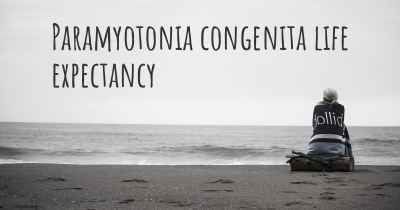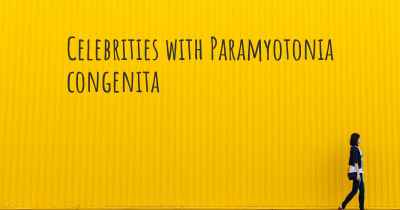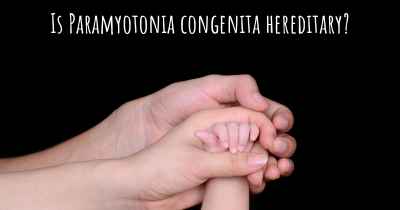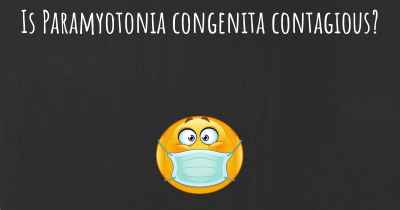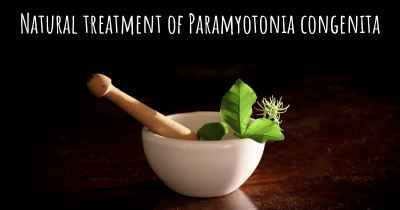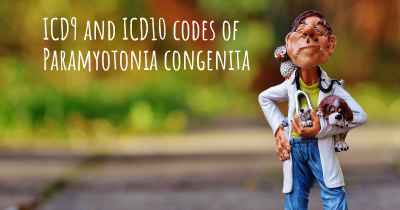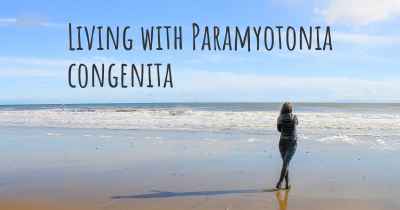Which are the symptoms of Paramyotonia congenita?
See the worst symptoms of affected by Paramyotonia congenita here
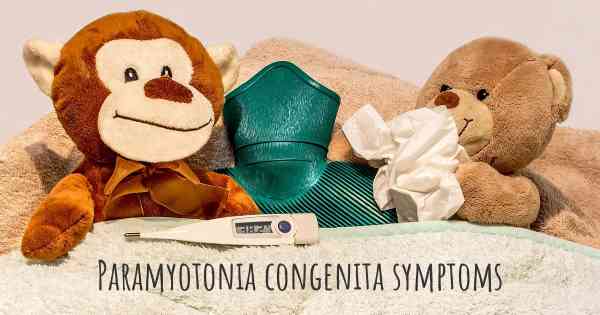
Paramyotonia congenita is a rare genetic disorder that affects the muscles and causes muscle stiffness or weakness. It is classified as a type of channelopathy, which means it is caused by a mutation in the genes that control ion channels in the muscles.
The symptoms of Paramyotonia congenita typically appear in childhood or adolescence and may vary in severity from person to person. The most common symptom is myotonia, which is characterized by muscle stiffness or difficulty relaxing the muscles after contraction. This stiffness is often triggered by cold temperatures or physical activity and can affect various muscle groups, including the face, hands, arms, and legs.
During episodes of myotonia, individuals with Paramyotonia congenita may experience muscle weakness as well. This weakness can be temporary and usually improves with rest. The severity and duration of myotonic episodes can vary, ranging from mild discomfort to more significant muscle stiffness and weakness.
Another common symptom of Paramyotonia congenita is paralysis or temporary muscle immobility. This paralysis typically occurs after a period of muscle activity or exposure to cold temperatures. The affected muscles may become completely paralyzed for a short period before gradually recovering their function.
Individuals with Paramyotonia congenita may also experience muscle pain during or after episodes of myotonia or paralysis. This pain can be described as aching, cramping, or soreness in the affected muscles.
In addition to muscle-related symptoms, Paramyotonia congenita can sometimes affect other body systems. Some individuals may experience ocular symptoms such as drooping eyelids (ptosis) or abnormal eye movements. Rarely, individuals may also have respiratory or swallowing difficulties due to muscle weakness in the throat and respiratory muscles.
It is important to note that the symptoms of Paramyotonia congenita can be triggered or worsened by certain factors, including cold temperatures, physical exertion, stress, and even certain medications. These triggers can vary among individuals, and it is essential for affected individuals to identify and avoid their specific triggers to manage their symptoms effectively.
Diagnosis of Paramyotonia congenita is typically based on the individual's clinical symptoms, family history, and genetic testing. Genetic testing can identify the specific gene mutation responsible for the disorder.
While there is no cure for Paramyotonia congenita, treatment focuses on managing symptoms and preventing complications. Physical therapy and regular exercise can help improve muscle strength and flexibility. Avoiding triggers such as cold temperatures and excessive physical activity is also important. In some cases, medications such as sodium channel blockers may be prescribed to help reduce myotonia and muscle stiffness.
Living with Paramyotonia congenita can be challenging, but with proper management and support, individuals with the condition can lead fulfilling lives. It is important for affected individuals to work closely with healthcare professionals to develop a personalized treatment plan and to seek support from patient advocacy groups or support networks.
